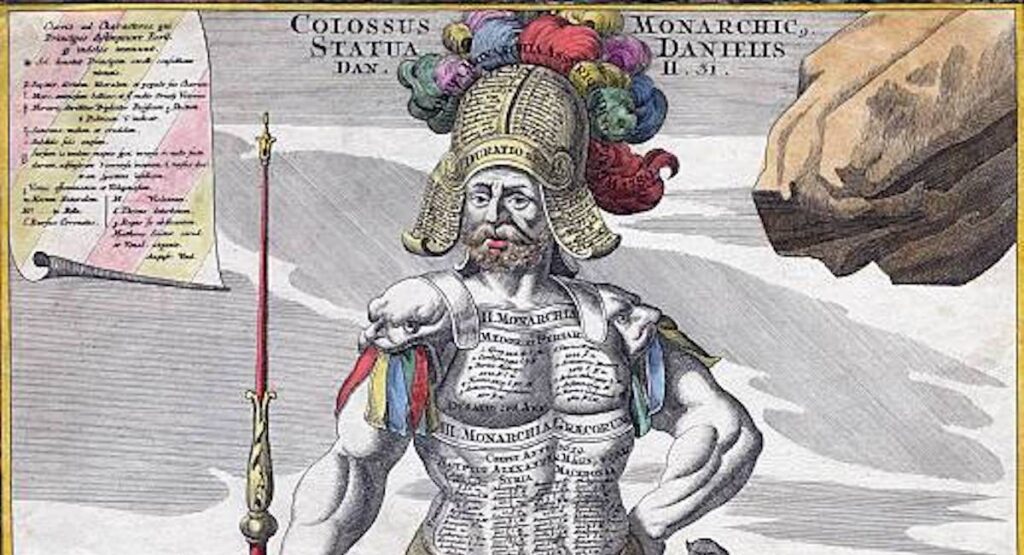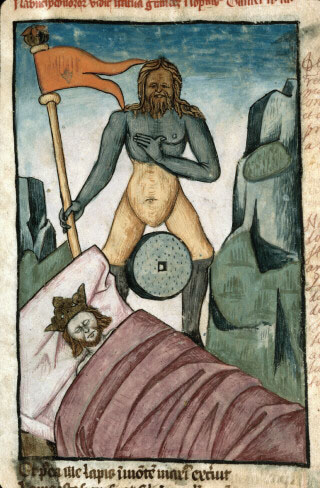
The Right to Health and a Healthy Environment session of the Kairos Center’s Moral Policy Conference last fall brought to bear the indisputable connection between healthcare and the environment. Panelists addressed issues ranging from the burdens of an unjust healthcare system shouldered by our most vulnerable, to the devastating realities of extractive industries on human lives and the natural world. Dr. Brigitte Kahl offered a Biblical reflection on the story of the Colossus to illustrate the weakness of a system that serves only those at the top of society, at the expense of our human and environmental health, and how such a system is bound to fall.
Dr. Brigitte Kahl is Professor of New Testament at Union Theological Seminary. She is a long-time collaborator with the Kairos Center, with whom she has co-taught courses like “Reading the Bible with the Poor” and “Paul and Poverty.” Dr. Kahl has published and lectured extensively on Paul, Luke/Acts, Genesis and a broad range of topics in Biblical interpretation, peace, ecology, gender and social justice, anti-Judaism and anti-Islamism. Her 2020 article with Jan Rehmann on the ecological crisis, the Bible and the Green New Deal offers a poignant eco-theological reflection on the urgency of addressing these interlocking crises today.
Read Dr. Kahl’s reflection on the Colossus (Daniel 2) below.

Listening to all the powerful stories about eco-justice, resistance and resilience we have heard this morning, I can’t help but think how they are all part of the big storybook of sacred stories that we call the Bible. They are a new re-telling, a contemporary version of what we can also read in many variations in the big story of the Bible. This morning, I am just another storyteller. And I want to start with one of these old stories that we find in the book of Daniel, chapter 2.
There once was a big king. He had a dream that he couldn’t get over. It was worrisome and, actually, a nightmare. What he saw in his dream was a very big statue, a Colossus. This supersized man-image was made of different metals: the head of fine gold, the chest and the arms of silver, further down around the belly — bronze. The legs were iron. But, the feet, curiously, were nothing but a mixture of a bit of iron and just clay: dirt.
I always found it puzzling to picture this clay-feet statue in Daniel 2. To be sure, there is nothing particularly surprising about a fancy play toy made of gold and silver that showcases the superpower of a superman like this King Nebuchadnezzar of Babylon. But who in their right mind would make such a statue with feet from clay, just dirt? Even if you fortify the mud with a bit of iron, how can it hold the whole thing up? Inevitably, the colossus will topple. So what is the story trying to tell us?
Perhaps we have to ask differently. Suppose you worship power and wealth and you make a statue: a statue with a big, giant head and probably also a big, massive crown on it, all made of solid gold and sitting on a silver trunk. No wonder if you spend all your money at the top there’s nothing left at the bottom. Not enough “trickling down” to build a sustainable foundation. We are dealing with a structurally very unhealthy statue here, although it still looks terrific to a lot of people.
No wonder if you spend all your money at the top there’s nothing left at the bottom. Not enough “trickling down” to build a sustainable foundation.

Or perhaps the statue builder just forgot to think about the feet. It seems such a trivial thing after he has made this glorious head: a humongous shiny orb of gold sparkling in the sun that attracts everybody’s gaze and attention. You simply don’t notice what is happening on the ground, where people go without food or housing or healthcare. Or, without water that you can actually drink, or air and soil that are uncontaminated. So, if money and power count more than health and life, then we end up building these statues and worshiping them.
Or maybe this statute that is so irreparably flawed from the outset. Is Earth herself striking back? Mud, clay, and dirt refusing to sustain this wasteful and unbearable (literally!) superstructure any longer. We know that gold, silver, bronze, and iron all are produced by an extractivist, exploitative and polluting economy that treats Earth as nothing other than a provider of natural resources that are there for humans to take. And, after all these precious metals, rare earths, oil, coal, fossil fuels etc. have been extracted, the earth a second time is abused as the big dumping site of all our waste. So perhaps the collapse of the Colossus is just a signal that Earth is starting to take action.
Regarding the Earth, I think Christianity carries a heavy load of responsibility for many things that went very wrong. As Christians we have often treated Earth, nature and the environment as inferior and something we don’t need to care about, because we are something better and higher. And in the end we will get something better “high up,” namely heaven. But “heavenism” is not what the Bible teaches. We won’t get a replacement Earth, like a more advanced version of our cell phone after we have dumped the old one. The Bible doesn’t promise us that we can destroy Earth with impunity, expecting that we will get a spare planet.
Let us get back to our story and the dream of the king in Daniel 2. The multi-metal statue he sees looks golden and shiny, at least in its upper part. It is not only taken from the Earth, but also made from the labor and life blood of countless people working in the mines, often as slaves or indentured servants and without seeing the light of the day for weeks. This system is already well developed in ancient biblical times. I was just reminded of this when Mikaela told her story about mountaintop removal in Appalachia this morning.
Mountaintop removal is not a modern invention. The Romans already did it, and called it Ruina montium, which means “ruin of the mountains.” They extracted gold by digging deep, deep tunnels into the mountain, and then pushing water into them under high pressure from huge reservoirs that they had built on top. The water rushed in with high power and made the mountain collapse, burying many of the underground laborers, but also pushing the precious gold water to the surface where the shiny metal particles were meticulously filtered out. In Las Medullas in Spain, for example, you can still see today what this did to the environment. Las Medullas has been named a UNESCO World Heritage Site, in the meantime. It is a place where nature even 2,000 years later has not fully recovered and the mountains themselves testify to the ecological disaster unleashed by the Roman Empire — as the mountains and people in Appalachia today give testimony to the destruction released on them by capitalist greed.
But, there is hope in our story. And that is the best thing, because there was a lot of hope also in what we heard this morning. Unfortunately, it is precisely this hope that makes the dream of the people and the dream of the Earth appear as a nightmare to the king. For there is a little stone; a tiny piece of rock that comes rolling along right towards the clay feet of the colossal statue. And the dirt of which the feet of the statue are made happily leaves its forced union with the iron and embraces the rock. And all of a sudden, the statue has no more feet and falls down and scatters into a million pieces.
You know, you could just imagine the feet walking away from under the statue. It is what we call building a movement. People marching, people on the road, people moving away from the Colossus and leaving it behind; no longer looking up to the glitter at the top but ahead to a future that makes room for all — and for the Earth. A new way to organize society that God will call a truly indestructible and sustainable reign (Dan 2:44). So this is about change, and this change starts from the bottom, but the bottom has to understand its power and we have seen some of this power here this morning. People who are treated like dirt and the dirt of the very Earth are rising up against the Colossus.
You know, you could just imagine the feet walking away from under the statue. It is what we call building a movement.
I think we are at such a kairos moment right now. COVID has done terrible things, and it has taken a terrible toll again from the poor and the people on the margins. But this tiny virus, with all its deadly power, has also shown that things can be done differently in many ways — and that the whole Colossus is standing on very weak feet.
The Colossus can be stopped. It can be toppled. And the whole colossal system that is built on destroying people and the planet is not infallible. Rather, it can be changed. But the people on the margins and on the ground have to do it. Theologically, this is the most important faith act that we need right now: Trust that change is possible. Not just necessary, but also possible, for the end of capitalism is not the end of the world.
The Colossus can be stopped. It can be toppled. And the whole colossal system that is built on destroying people and the planet is not infallible.
So, this is what we can take away from this morning. We can topple the Colossus. We can walk away from it. But if we don’t, it will bury us underneath it. So we better get moving.